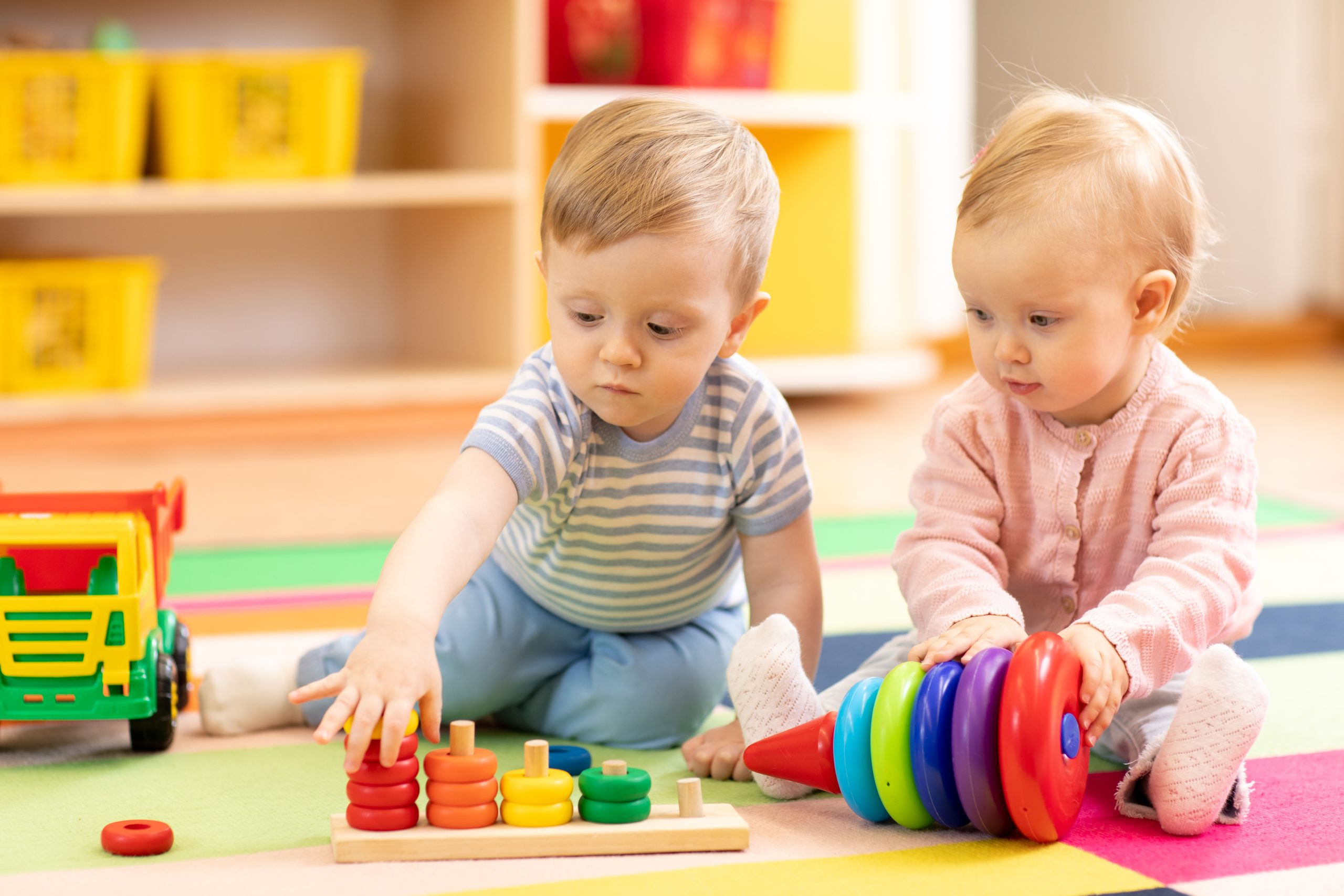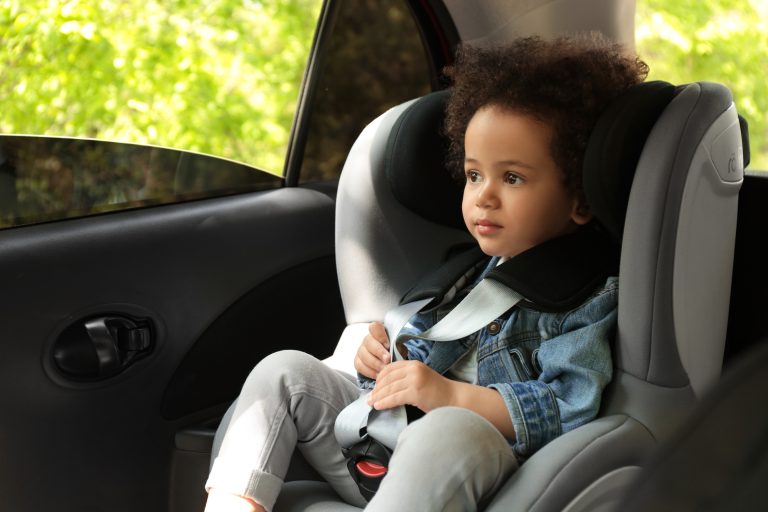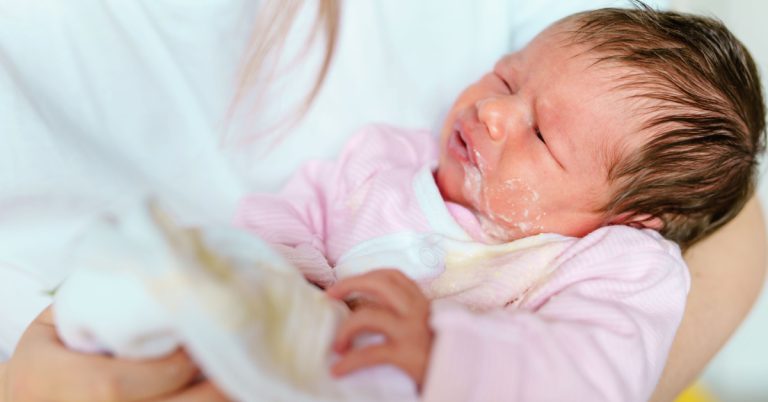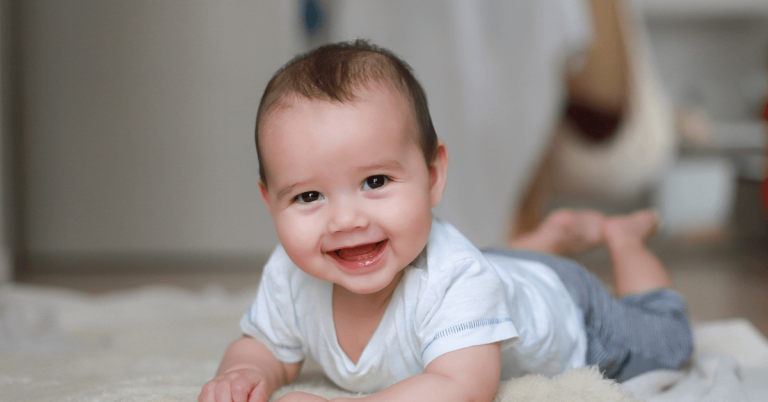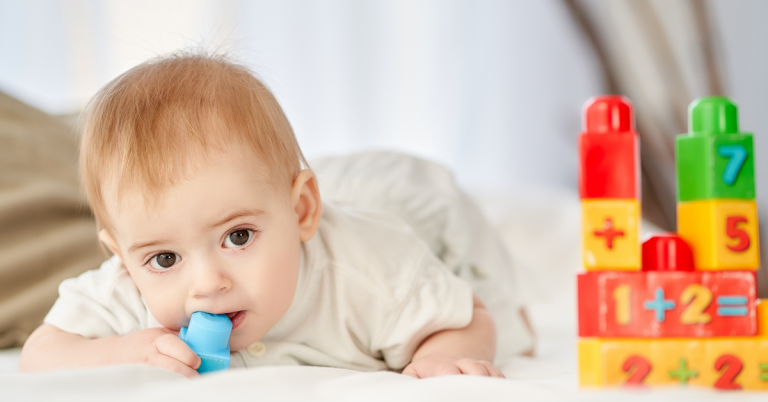Play stems from our innate curiosity and learning instinct. Through play, babies learn about life, developing problem-solving skills, motor skills, and creativity. Playing together helps your baby build trust and, most importantly, brings joy. That’s why play is so precious.
In this article, we discuss how play contributes to development, its educational benefits, its role in advancing imagination, and its impact on secure attachment. We also recommend age-appropriate toys for children aged 0-4 years.
You can download our “Play & Toys Guide” here.
Play Stages
- Stage 1: I meet
- Stage 2: I explore
- Stage 3: I learn
- Stage 4: I socialise
Stage 1: I meet
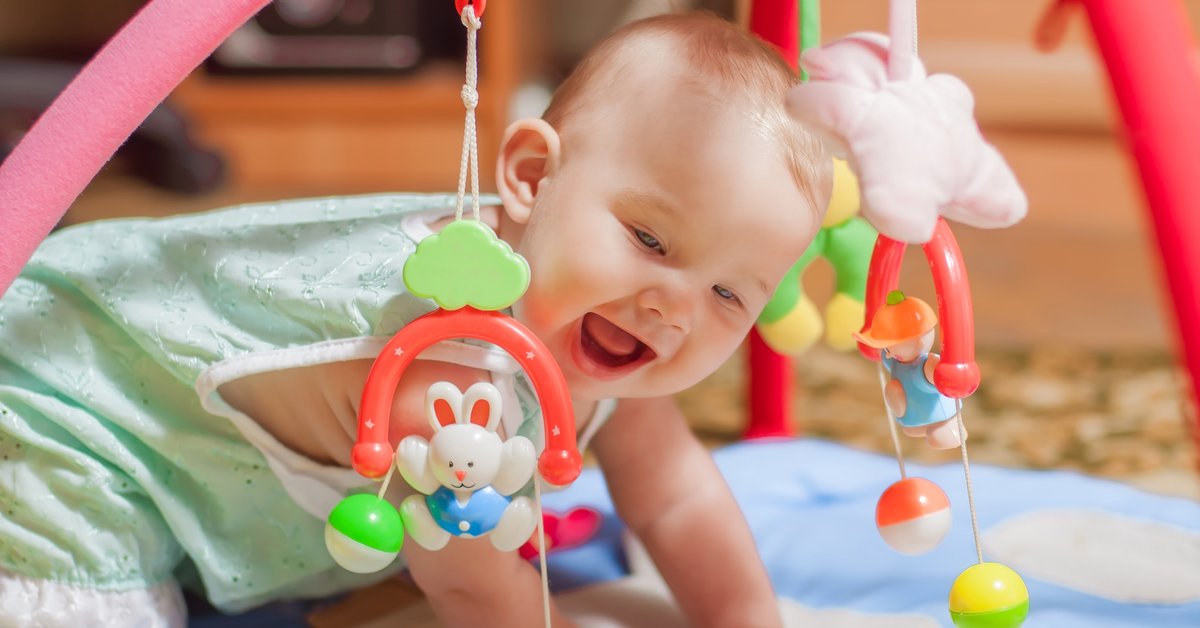
In the first three months after birth, your baby begins to adapt to the new world. Movements are still reflexive as they gradually become familiar with their body, increasing awareness and control. By around four months, your baby will further develop their senses and ability to grasp objects.
Play is essential for babies to learn about their environment. They shake, mouth, and examine objects with their hands. Suitable toys include rattles, teething toys, large balls, and soft toys. Babies also love mirrors, though they typically recognise themselves around 18 months. An unbreakable baby mirror is a great choice, making tummy time enjoyable and aiding visual development.
From 4 to 6 months, babies may start to sit with support. By 9 months, they can usually sit unaided and begin crawling and standing while holding on to something. Ride-on cars help strengthen leg muscles and encourage first steps. Musical toys with colourful lights and large ring toys are also engaging and beneficial.
Between 6 and 12 months, babbling begins, marking an important phase in language development. Babies may use simple but meaningful words around their first birthday. Reading board books about colours, objects, and numbers is a wonderful activity. Your baby may try to repeat short words, enhancing their language skills.
Ideal Toys for Your Baby
- Playmats
- Rattles
- Soft toys
- Teething toys
- Large balls
- Unbreakable baby mirrors
- Musical toys with colourful lights
- Large ring toys
- Board books about colours, objects, and numbers
Click here to check out suitable toys for 0-12 months!
Stage 2: I Explore

Babies generally start walking between 12–24 months, allowing them to engage in more active play. Introducing building blocks and puzzles around 18 months is ideal. These toys support the development of problem-solving, concentration, early maths, spatial awareness (perceiving and distinguishing shapes), and motor skills. Additionally, sportscasting or describing the activity contributes to language development.
The age between 0 and 2 is critical for developing a secure attachment. Play allows you to spend quality time with your baby. Around 18 months, your baby reaches an important milestone in social skills, starting to realise that people have different perspectives. For instance, your baby may turn an object towards you when handing it over. This awareness forms the basis for developing empathy.
Generally, opting for toys made of natural wood and water-based paint is advisable.
Ideal Toys for Your Baby
- Building Blocks
- Ride-On Car
- Wooden Puzzles
- Colour Blocks
- Books
- Activity Toys
- Playdough
- Crayons
Click here to check out suitable toys for 1-2 years old!
Stage 3: I learn
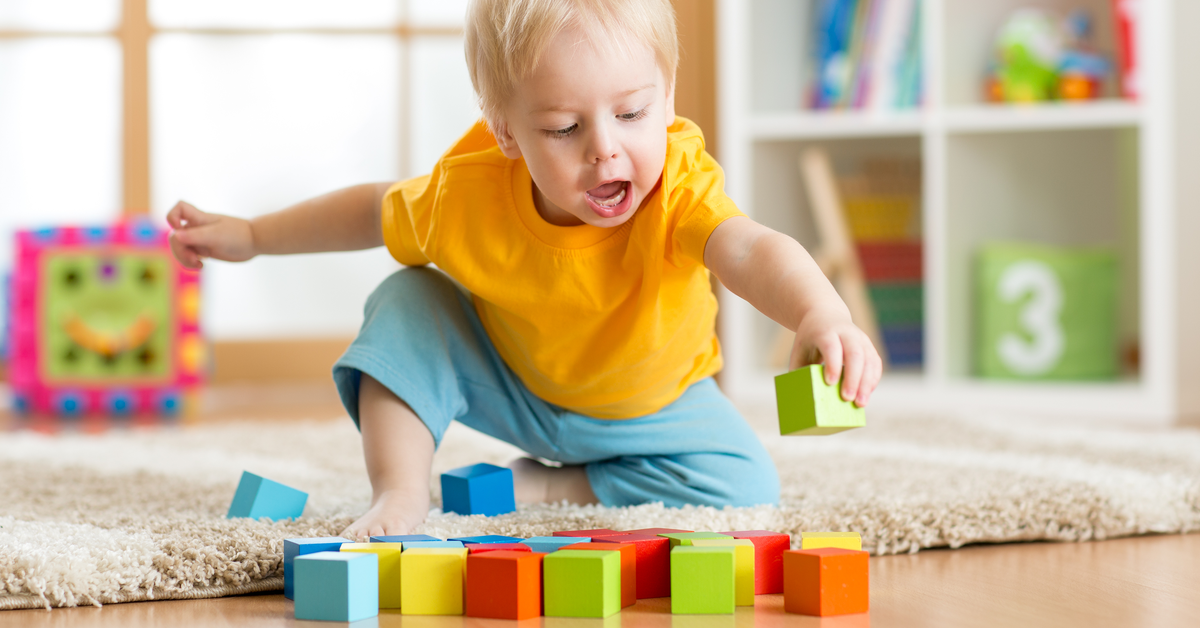
Between 24–36 months, your child enters an important learning phase. Most parents start potty training at this age, which may require patience. By age 2, children crave independence, often using words like “no” and “mine.” Embracing this independence positively impacts their self-confidence and self-esteem. When your toddler wants to do something independently or show off their skills, appreciate and encourage them.
Language skills will also flourish during this period. However, you may notice an increase in tantrums and meltdowns due to a lack of impulse control and difficulty expressing needs. Respond to these outbursts with patience and understanding, affirming their emotions while calmly maintaining boundaries.
Play is crucial for development. Children at this age will start engaging in pretend play, creating stories as their imagination flourishes. Acting out social or challenging situations can help them navigate real-life scenarios. Around 24 months, children may physically play together, but true peer engagement often begins around 36 months. By this time, they become aware that each individual has their own goals and intentions, leading to shared imaginative play.
By age 3, your child’s fine motor skills will have matured, allowing them to enjoy building blocks and puzzles with more and smaller pieces. Ensure toys comply with safety age ranges to avoid choking hazards.
Ideal Toys for Your Child
- Rocking Horse
- Wooden Letter Baby Puzzle
- Mini Coordination Play
- Mega Puzzle
- Scooters
- Swimming Aids
- Outdoor Toys
- Pretend Play Sets
- Puppets
- Balls
Click here to check out suitable toys for 2-3 years old!
Stage 4: I socialise
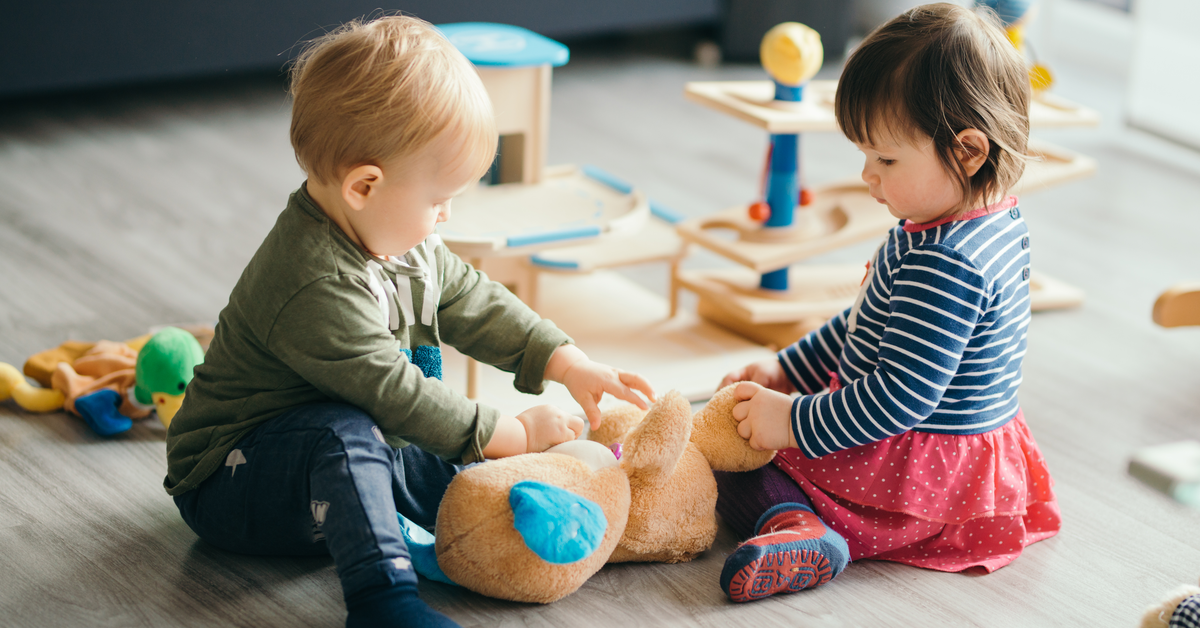
Your Role and the Educational Side of Play
As previously mentioned, curiosity and learning drive play. Babies naturally possess this instinct, and with the right guidance, parents can nurture this journey of discovery. Firstly, you should avoid excessive intervention during play. When you intervene, make decisions for your baby, or “corrects” the play, it diminishes the developmental benefits. Frequent interruptions can distract your baby and cause boredom. Research shows that excessive intrusiveness may lead to issues with accepting change, self-control, and intrinsic motivation later in life.
What can you do instead?
Demonstrate how an activity is done while describing your actions. After that, you should avoid frequent interventions. If necessary, give a few brief instructions, ensuring you don’t disrupt your baby’s focus. You can show appreciation for your baby’s efforts rather than the outcome, saying things like, “You’re showing such concentration” or “I can see you’re working hard to build this tower.” This helps build confidence and self-esteem.
Utilise “child-led play” as a learning tool. You should allow your child to take the lead and add an educational touch to the play. For example, if you want to teach colours and your child wants to build a tower, you can say, “Now, let’s add the red block” or “What colour is this block? Red!” Studies show this method enhances language development as play provides context for understanding, making it easier for children to learn the meaning of words.
Gradually lead your baby into new developmental stages by using a step-by-step approach, continually offering plays that challenge them. Once your baby has mastered a specific skill or play, let them continue without your support. Then introduce a new play that requires learning a new skill, offering support as needed. You should avoid continuing to support skills your baby has already mastered, but follow your baby’s pace.
1. My child loves fighting play. Will they become violent in the future?
Play is a vital tool for children to learn about life. Play-fighting (wrestling, jumping, running, tickling, etc.) does not lead to future violence; instead, it has positive effects. Confrontational play helps children control aggressive impulses, improves social skills, and makes them aware of their physical abilities and limits.
Children also gain experience in self-defence, handling conflict, winning and losing, sharing, and changing roles. Such plays support secure attachment. Encouraging your child (“let’s try to jump higher,” “let’s try to run faster,” etc.) builds independence and self-confidence. You can help strengthen your child’s self-control by setting limits, such as “no biting,” “no throwing,” and “no hitting,” and guide your child in calming down and ending the play. You should ensure the environment is safe by removing any breakable or dangerous objects. If someone accidentally gets hurt and starts crying during play-fighting, it is best to end the play.
To distinguish a play-fight from a real one, you can look for these signs: During a real fight, a child will frown, cry, get flustered, and try to overpower their opponent. In contrast, play-fighting involves laughter, role changes, and allowing the other side to win. If you think your child is getting into real fights often, you may want to seek professional support.
2. My child is not sharing their toys. What should I do?
It’s completely normal for toddlers not to share their toys. Around the age of 2, children are developing their sense of individuality. At this stage, toddlers often engage in “parallel play,” playing side by side with different toys rather than interacting directly. By age 3, children typically become more open to sharing, and as caregivers, we can encourage this. Children learn by observing and imitating. While playing, you can talk to your child about sharing, taking turns, and exchanging toys, demonstrating how to do this. Patience is key, as teaching children to share requires repetition and consistency.
3. My baby is constantly breaking their toys. Is this normal? What can I do?
It’s quite common for young children to break toys. This can happen for various reasons, including curiosity and exploration. Children at this age may throw, hit, or bend toys to see what happens, sometimes resulting in breakage. If a toy is broken, it doesn’t always mean it needs to be discarded. Toys can often be used in new, creative ways.
However, always check that the toy remains safe to play with, ensuring there are no sharp edges or loose parts that could pose a hazard. Providing toys designed for disassembly and reassembly, like building blocks, can satisfy your child’s curiosity without leading to breakage.
If your child breaks toys out of aggression, this might be a form of confrontational play, which is normal as long as it doesn’t harm them or others. However, if you feel your child’s aggression is extreme, it’s important to seek professional advice. Aggressive behaviour can sometimes be an expression of difficult emotions.
4. How can I end a play? No matter how long or how often we play, my child always wants to continue.
Creating a securely attached relationship does not mean being overly permissive. As a caregiver, you need to set clear boundaries, both for safety and time. For example, if it’s time to go home for a meal, you should uphold this boundary while respecting the importance of the activity for the child.
A play can be highly enjoyable and requires a lot of concentration. Just as adults don’t like to stop an important task abruptly, children feel the same way. Therefore, it’s key to inform your child in advance that the activity will need to end soon. Be as concrete as possible. You can use a timer, count to 30, or use another cue that works for you and your child. If your child is still upset, acknowledge their feelings and offer consolation and support, while maintaining your boundary. This is a natural part of life.
Consistency is important, practice makes perfect.
In conclusion, play is an essential aspect of your baby’s development, fostering cognitive, motor, social, and emotional growth. By understanding the different stages of play and the appropriate toys and activities for each age, you can effectively support your child’s learning journey. Remember to provide a variety of play experiences, allow your baby to explore at their own pace, and engage with them to build trust and strengthen your bond.
Would you like to share your experiences and questions in the comments?


